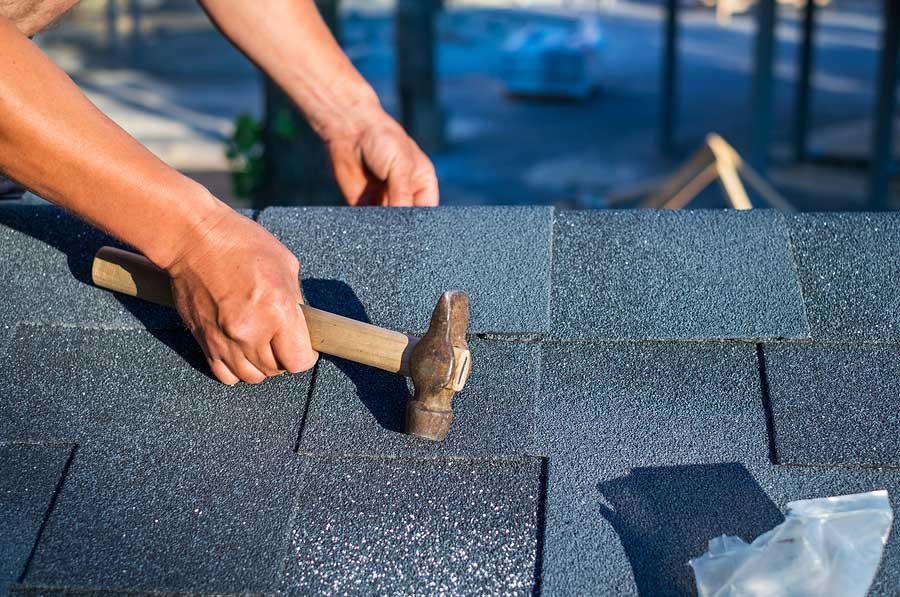A sturdy and well-maintained roof is essential for protecting your home from the elements. However, over time, roofs can develop issues such as leaks, damaged shingles, or sagging areas that require prompt repair. While some minor roof repairs can be done by homeowners, larger or more complex repairs may necessitate professional assistance. In this article, we will guide you through the best practices and steps to effectively repair your roof, ensuring its longevity and protecting your investment.
- Assess the Damage: Before embarking on any roof repair project, thoroughly inspect your roof to identify the extent of the damage. Look for missing or damaged shingles, cracked flashing, leaks, or signs of water damage on the ceiling. This assessment will help you determine the specific repairs needed and the appropriate materials to use.
- Gather the Necessary Tools and Materials: Once you have identified the repairs required, gather all the necessary tools and materials before starting the repair process. These may include a ladder, safety equipment, roofing nails, shingles, roofing cement, flashing, pry bar, roofing adhesive, caulking gun, and a hammer. Ensure that you have everything on hand to avoid delays during the repair.
- Fixing Shingle Damage: Damaged or missing shingles are a common roofing issue. To replace a damaged shingle, carefully lift the edges of the surrounding shingles using a pry bar and remove any roofing nails holding the damaged shingle in place. Slide the new shingle into position and secure it with roofing nails. Apply roofing cement under the edges of the adjacent shingles to create a watertight seal.
- Addressing Leaks: Leaks can cause significant damage to your home if left unattended. To repair a leak, locate the source by inspecting the area where the water is entering your home. Once identified, remove any damaged materials, such as shingles or flashing. Apply roofing cement or roofing adhesive to seal the leak, ensuring that the area is adequately covered. If the leak is extensive or persistent, it’s advisable to consult a professional roofing contractor for a thorough assessment and repair.
- Fixing Flashing: Flashing is used to create a waterproof barrier around roof protrusions such as chimneys, vents, or skylights. If the flashing is damaged or improperly installed, it can lead to leaks. To repair flashing, remove any old caulking or roofing cement around the damaged area. Install new flashing, ensuring a snug fit and proper alignment. Secure the flashing with roofing nails and apply roofing cement or roofing adhesive to seal the edges.
- Repairing Sagging Areas: Sagging areas on the roof can indicate structural issues or water damage. It’s crucial to address sagging promptly to prevent further damage. However, repairing sagging areas requires expertise and professional assistance. Consult a reputable roofing contractor who can assess the extent of the damage, identify the underlying cause, and recommend appropriate repairs or structural reinforcements.
- Regular Maintenance and Inspections: Prevention is key to minimizing the need for extensive roof repairs. Regularly inspect your roof for signs of damage, such as loose or damaged shingles, cracked flashing, or sagging areas. Additionally, clear debris, leaves, and moss regularly to prevent water buildup and deterioration. Conducting routine maintenance and inspections will help identify minor issues before they escalate into major problems.
Conclusion: Repairing your roof promptly and effectively is crucial to maintaining a safe and secure home. Whether it’s replacing damaged shingles, fixing leaks, addressing flashing issues, or tackling sagging areas, following the best practices and techniques will ensure a successful roof repair. Remember, for complex or extensive repairs, it’s advisable to consult a professional roofing contractor who can provide expert guidance and ensure the longevity of your roof. By taking proactive measures and conducting regular maintenance, you can protect your home and enjoy a reliable roof for years to come.

